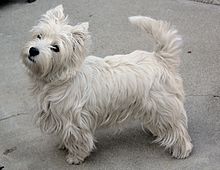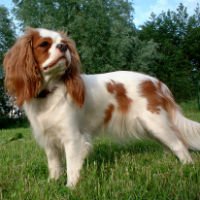West Highland White Terrier
Adopt a West Highland White Terrier Rescue

-
Breed Group : TERRIER
-
Origin : Scotland
-
Average Height : 10" - 11"
-
Average Weight : 13 - 22 lbs.
-
Life Span : 14 - 16 years
Photo Courtesy info : Westie Rescue of Orange County
-
Size
1 2 3 4 5 6 7 8 9 10 -
Energy
1 2 3 4 5 6 7 8 9 10 -
Intelligence
1 2 3 4 5 6 7 8 9 10 -
Ease of Training
1 2 3 4 5 6 7 8 9 10 -
Hypo-Allergenic
1 2 3 4 5 6 7 8 9 10 -
Shedding
1 2 3 4 5 6 7 8 9 10 -
Good with Kids
1 2 3 4 5 6 7 8 9 10 -
Good with Other Pets
1 2 3 4 5 6 7 8 9 10 -
Guard Dog
1 2 3 4 5 6 7 8 9 10






